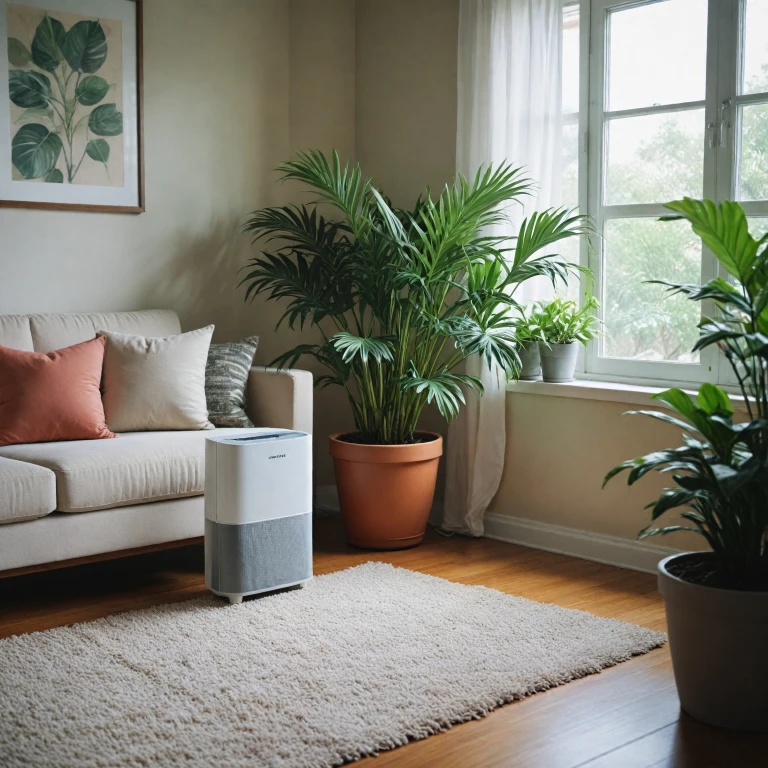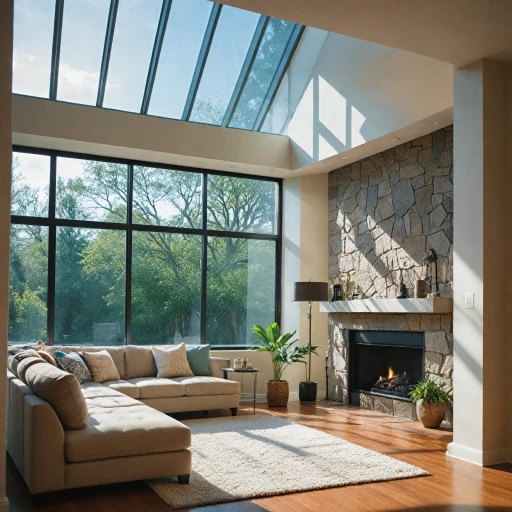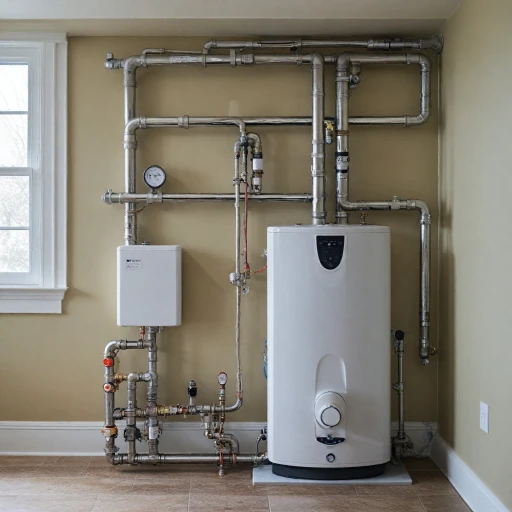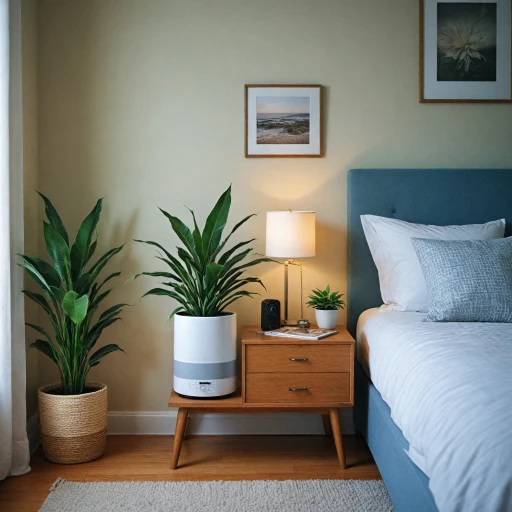Understanding Air Purifier Functionality
Decoding the Mechanics Behind Air Purifiers
Air purifiers play a crucial role in enhancing indoor air quality by filtering out pollutants such as dust, pollen, pet dander, and other particulates. The core functionality of air purifiers lies in their filters, which serve as the primary defense against airborne contaminants. High Efficiency Particulate Air (HEPA) filters, for example, trap tiny particles and provide clean air, which can significantly help with respiratory health.
When placing air purifiers in your space, understanding their mechanics is essential. They function by drawing in the ambient air, passing it through a series of filters, and releasing purified air back into the room. The air circulation within the room is a critical factor that purifiers rely on to ensure optimal performance. This process makes the placement of your air purifier decisive in achieving the best air quality outcomes.
For more insights on optimizing appliances that enhance your indoor environment, consider reading about optimizing fuel efficiency with the right water filter. Proper filtration, whether in an air purifier or a water heating system, is fundamental for maintaining healthy living spaces.
Factors Affecting Air Purifier Placement
Key Influencers of Purifier Placement
Placing an air purifier in an optimal location is critical to enhancing indoor air quality. Where you place your purifier will significantly impact its performance and ability to clean air effectively. Various factors come into play when choosing the best location for your air purifier in a room or living area, such as airflow, room size, and air circulation.- Air Circulation: Proper air circulation is vital to ensure that pollutants are efficiently captured and filtered out of the air. You should place the air purifier where it can take advantage of natural airflow within the room, like near doorways or open windows, but not directly in line with intense drafts that could interrupt its operation.
- Room Size and Layout: The dimensions and configuration of a room will also dictate the best place for your air purifier. This is part of understanding the purification capacity of your device in relation to the room size it serves. A small device might not suffice for a large living room, impacting its ability to provide clean air throughout the space.
- Proximity to Pollutant Sources: Placing the purifier closer to areas where pollutants are commonly generated, such as a pet area where pet dander is prevalent, or a home office with lots of printed material, can help in capturing pollutants right at the source.
- Height Considerations: Whether the unit is placed on the floor or elevated will influence its efficiency. Placing the purifier closer to your breathing zone, like on a table or countertop, could enhance its ability to capture airborne pollutants that impact sleep quality and overall health.
Pros and Cons of Floor Placement
Benefits and Drawbacks of Ground-Level Placement
When considering where to place your air purifier, positioning it on the floor might seem convenient and blends well with room decor. However, understanding the implications of floor placement is crucial to enhance the efficiency of your device. Firstly, placing an air purifier on the floor can help in capturing pollutants like pet dander and dust that naturally settle closer to the ground. This position can be beneficial in maintaining clean air, especially in rooms like the living room or bedroom where you sleep. The airflow circulating at the lower levels can assist the device in drawing in contaminants efficiently. However, the floor may not always be the best place for every air purifier. Here's why:- Air Circulation: Placing the purifier at a higher position might improve the device's ability to circulate clean air throughout the room, reaching various breathing zones more effectively.
- Obstruction: In rooms with furniture, items on the floor may block air purifiers, affecting their ability to draw in air and filter pollutants. Ensuring there's enough surrounding space is essential for optimal air quality.
Alternative Placement Options
Explore Different Placement Options for Your Air Purifier
When it comes to placing your air purifier, there are several alternatives to the traditional floor placement that might be worth considering. While the floor can be a suitable location under certain circumstances, sometimes other areas might offer better performance and cleaner indoor air. Ensuring optimal purifier placement can significantly improve your indoor air quality by efficiently capturing harmful pollutants such as pet dander or dust particles. Here are some placement strategies to consider:- Wall-Mounted Purifiers: Some air purifiers are designed to be mounted on walls. This can be advantageous in rooms with limited floor space, providing a more direct airflow path to where people breathe most.
- Elevated Surfaces: Placing the air purifier on a raised surface such as a shelf or a table can help optimize air circulation, ensuring the clean air reaches further into the room, especially in larger living spaces. This can be particularly effective in spaces with varied room size.
- Central Room Placement: Positioning your air purifier in a central area within the room can maximize air circulation. This setup can help distribute the filtered air evenly across the space, a method often advisable in open-concept areas for maintaining a uniform clean air environment.
- Bedroom Placement: Situating the air purifier near the bed, perhaps on a nightstand, can be beneficial during sleep. This way, you ensure that you are continuously breathing quality air throughout the night, especially crucial for those sensitive to allergens.
- Avoiding Obstructions: Regardless of the chosen location, ensure the air purifier is not placed against walls or obstructed by furniture, as this can hinder proper airflow and diminish performance. For maximum efficacy, guarantee an unobstructed 360-degree coverage of the room.
Tips for Optimal Air Purifier Performance
Effective Strategies for Maximizing Air Purifier Performance
To ensure your air purifier delivers optimal results, a few key strategies should be implemented. These tips revolve around understanding how placement affects performance, as well as tailoring use to specific room dynamics and pollutant challenges.
- Consider Room Size: Choose a unit that is suitable for the room size. Oversized or undersized purifiers won't handle pollutants effectively, affecting indoor air quality.
- Enable Unobstructed Airflow: Ensure that the air purifier is in a location where air can circulate freely. Avoid tight corners or behind furniture that might block airflow.
- Regularly Check and Replace Filters: Filters should be replaced promptly as part of regular maintenance. Clean or replace according to the manufacturer's instructions to maintain clean air in your room.
- Consider Air Pollutants: If specific pollutants like pet dander are a concern, ensure your purifier has the suitable HEPA or activated carbon filters to target these pollutants effectively.
- Align with the Breathing Zone: Position the purifier in the living room or sleeping areas where people spend most of their time. This ensures the air you breathe is as clean as possible.
- Ensure Smooth Air Circulation: Don't place the air purifier directly on the floor if your home experiences low air circulation. Elevating it might help in such cases, keeping the airflow uninterrupted.
By following these guidelines, you can ensure that your air purifier functions to its best potential, thus contributing to a healthier indoor environment. These tips help in navigating the intricacies of purifier placement and maintenance effectively, enhancing overall air quality.
Common Misconceptions About Air Purifier Placement
Dispelling Myths Around Air Purifier Placement
When deciding on the best place for your air purifier, it's crucial to separate fact from fiction. There are several misconceptions about air purifier placement that can impact the performance and effectiveness of these devices. Let's clear up some common misunderstandings:- Airflow Concerns: Some people believe that placing the air purifier directly in the middle of a room is necessary for optimal air purification. In reality, ensuring free air circulation around the unit is more important than exact positioning. As long as the purifier's vents aren't obstructed, it can effectively clean the room air quality.
- Proximity to Pollutants: Another myth is that air purifiers must be placed directly next to pollution sources like open windows or near pet areas to work best. While it's true that proximity to pollutants can help speed up initial air cleaning, air purifiers are designed to circulate the room air effectively, gradually reducing pollutants in the entire room.
- Multiple Units Needed for Larger Rooms: It's a common misconception that large rooms automatically require multiple purifiers. While room size does play a role, a single high-capacity air purifier can often handle larger areas if strategically placed to maintain optimal air circulation.
- Placement Near Doors and Windows Improves Functionality: Another widespread belief is that an air purifier should be placed near doors or windows to catch pollutants as they enter. While this might seem logical, it's not always the best strategy since open doors and windows can disrupt the purifier's airflow, impacting its efficiency.




